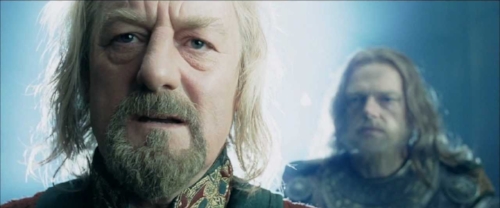Stages of Systemic Injustice (Part 1)
Famous pictures of Czeslawa Kwoka, a young Polish girl who would eventually die in Auschwitz. Taken by Willhelm Brasse.
Theoden: "How did it come to this?" (Lord of the Rings: The Two Towers, New Line Cinema - 2002)
Throughout history there have been exceptionally dark moments that have evoked the question among those with a conscience, "How did we get here?" Or like Theoden lamented in The Lord of the Rings: The Two Towers, "How did it come to this?" Many of us feel like we are living again in such times. I know that more recently the resurgence and legitimizing of white nationalism or the vilification and abandonment of desperate refugees are just a few examples of tragedies that have often left me with head bowed, those haunting questions echoing in my sleepless thoughts. And I am asking those questions from the perspective of someone who is largely unaffected by the evils of wide-scale oppression! What kind of internal interrogation of humanity's depravity goes through the mind of someone like the fourteen year old Polish girl, Czeslawa Kwoke, as she awaited her certain execution at Auschwitz?
no one ever "falls" into sin...
When I was studying theology in college, a professor of mine once said, "No one ever falls into sin...they slide." Beyond our own individual struggles, I believe this is true when it comes to human evil that is systematically implemented on a broad scale. Over the last several years I have given this considerable thought, wondering if we could somehow answer that question,"How did this happen?"--as if we were reverse engineering systemic evil--and if so, then perhaps we as a society could see the warning signs and stop our slide towards perpetrating hatred and cruelty on so many of our fellow human beings. It might be a naive proposition, but the faces of those like Czeslawa leave me determined to carry on.
After many hours reading, listening and reflecting on this, certain patterns started to emerge. Here and in the next Rage Against the Machine blog and podcast, I would like to share for your consideration six stages of systemic injustice. Before I share the first three stages (the next three will come next week), two foundational realities need to be recognized.
Systemic injustice is always focused on an identifiable group of people and this group of people is, the vast majority of the time, a minority within a society's total population. I believe there are exceptions to this, and we will look at some of these in the future, but they are clearly the exception to the norm and therefore won't be the focus of this two-part series. Rather, the following stages will be understood from a majority oppressor vs minority oppressed framework.
The sheer force of numbers means that the majority collectively monopolizes positions of power (decision-making authority) and resources (hard and liquid assets). Please note that I said collectively because it is also a reality that not every individual in a majority population benefits in terms of position and wealth to the degree that others within that majority enjoy. Recognizing this does not lessen the reality that the majority still holds a clear advantage and there remains significant potential for the abuse of power and the withholding of resources from minority communities.
With that groundwork laid, here are, in my opinion, the first three stages of systemic injustice.
stage one - misunderstood
An individual in a majority group unfairly or falsely judges the words, behaviors and intentions of an individual representing a minority group. Furthermore, the individual representing the majority group makes, consciously or sub-consciously, some kind of intrinsic connection between his or her judgement and the race, religion, economic status, gender/sexual identity, national origin, or ethnicity of the individual representing the minority group. These judgements and assumptions are understood as some form of a threat, but at this point only at a personal level.
Stage two - Misrepresented
Leaders in the majority group begin to emerge and spread misunderstanding among fellow members of their community, but now no longer just about the individual representing the minority community but about the minority community itself. By doing so they are unfairly and inaccurately speaking for the minority community. A growing consensus and narrative is beginning to form among the majority that casts the minority in an increasingly negative and even oppositional light.
stage three - Maligned
Here is when the majority goes from a place of suspicion to a firm posture of fear and animosity. Their perceived conflict with the minority has now been elevated to that of an existential threat. The supposed dangers associated with "those people" is couched in seemingly rational and moral arguments for things like "safety and security" or to preserve "cultural identity" or "our way of life", which just so happens to be that which is preferred by the majority. In reality, these are likely mere red herrings to a deep seated insecurity and perceived threat by the “other” to the majority's established influence and affluence. The majority has not reached a point of saying the minority shouldn't exist, but rather that their beliefs, values, and culture are not compatible with those of the majority's, and as such they either need to "go back where they belong" or be willing to be subject to the majority. This is also the stage where the majority's leaders, either implicitly or explicitly, begin to imply a lesser intrinsic value of the minority group (i.e. dehumanization), and this will only get worse in the following stages.
Up until this point, the majority's opposition to the "other" is mostly just rhetoric, but in the three stages to come the aspirations of systemic evil and injustice take their frightening form. We will explore this along with some of my thoughts on how to combat systemic injustice during each stage in Part Two.



